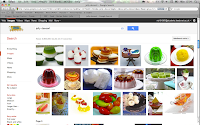Who were the new wave?
There was a Period of many “new waves”:
- Britain
- French movement most influential – focus on Paris
- Group of French Filmmakers:
- Jean-Luc Goddard
- François Truffaut
- Claude Chabrol
- Jacques Rivette
- Eric Rohmer
- All of these were once film critics, and all have a background in film
theory.
- All wrote for Cahiers du Cinéma
La Pointe Courte (1954), by Agnes Varda – Starts off the New Wave
The
French New Wave and European art cinema, post-1960
• Jean-Luc Godard, Breathless (1960)
• The French New Wave:
Godard and
François Truffaut
• Italy in the 1960s:
Federico Fellini,
Michaelangelo
Antonioni, Pier Paolo
Pasolini
• Other countries:
Ingmar Bergman
(Sweden), Luis Buñuel
(return to France
and Spain)
The
French New Wave (late 1950s-early 1960s)
• Henri Langlois and
the Paris Cinematèque
• André Bazin and the
realist tradition
• Cahiers du Cinema
• From Critics to Auteurs
• Against the “Cinema
of Quality”
• Discovery of
American genre films
• Cinematic, rather
than literary, values
• Importance of
personal expression
• Spontaneity and
digression
Truffaut at work, 1964

French New Wave: existentialism
(Philosopher Jean Paul Sartre (1905-1980)
–Stressed the individual.
–Experience of free choice.
–Absence of any rational
understanding of universe.
–Sense of absurdity in human
life.
–In indifferent world,
existentialist seeks to:
–Act authentically
–Use free
will
–Take
responsibility for all their actions.
–Avoid
playing out roles pre-ordained by society.
The French New Wave ‘Look’
- shot on
location
- used
lightweight sound and lighting equipment
- faster
film stocks, less light
- films shot
quickly and cheaply
- encouraged
experimentation & improvisation
- casual,
natural look
- available
light
- available
sound
- mise-en-scene
– French landscape, café
- mobile
camera
Reacting against french film of 1940s (cinéma
du papa)
The French new wave
did things against the norm of the French films:
•Against films shot in
a studio
•Against films that
were set in the past
•Against films that
were contrived and over- dramatised
•Against films that
used trickery and special effects
•Against la tradition
de qualité
The new wave
celebrated American film noir because they reflected contemporary urban life
Characters in contemporary dress, speaking
in the venacluar
Breathless - Jean-Luc Godard (1930- )
• Reinventing film
from the ground up
• Basis in American
gangster films, but everything is
deglamorized
• Location shooting,
natural light, handheld camera
• Use of jump cuts,
mismatches, and other violations
of continuity editing
rules
• Self-reflexivity:
Jean-Paul Belmondo and Bogart
• Jean Seberg:
America/France
• Use of digressions
and suspensions of action
• Reality of
story/reality of film
• Ambiguities of
character, of identification, of ending
French New Wave: the editing style:
–Free style
–Did not conform to editing
rules
–Discontinuous
–Jump Cuts
–Insertion of extraneous material
–Shooting on location
Natural lighting Improvised dialogue and plotting Direct sound recording Long takes Many of these conventions
The overall
goal - To make the audience
remember that they are WATCHING A MOVIE….
Mood shifts within the films:
•Heroes are aimless, stylish,
act silly.
•Yet they are also cowardly,
amoral.
•Mood shifts:
–Infatuation
–Romanticism
–Boredom
•About death and betrayal.
Godard: Influence
• Jump cuts
• Elasticity of time
• Montage, beyond Eisenstein
• Relative independence of sound & image
• Focus on both Narration and Narrated
• Self-reflexive cinema
• “Reality” of images (& sounds, & words)
Cleo 5 to 7 Varda
(1963)
- shot for $64,000 and financed by the New Wave producers Beauregard
and Ponti through their Rome-Paris films company.
- Cleo still has the features of the New wave film:
•shot in the day,
• black and white
•35 mm
•using real locations
•naturalistic light
• Its particular feature is its use of real time.
Cleo is a flâneus,
for most of the second part of the film:
•Beaudelaire’s masculine form flâneur
•coined the concept which is strongly masculine in its origins - being
the idea of the invisible male who walks through the city and observes but does
not engage with those about him.
Other New Wave
films
• 1959
• François Truffaut, The 400 Blows
• Alain Resnais, Hiroshima Mon Amour
• 1960
• Jean-Luc Godard, Breathless
• François Truffaut, Shoot the Piano Player
• 1961
• Jacques Rivette, Paris nous appartient
• Jean-Luc Godard, A Woman Is A Woman
• Alain Resnais, Last Year At Marienbad
• 1962
• François Truffaut, Jules and Jim
• Agnes Varda, Cleo From 5 to 7
• Jean-Luc Godard, My Life To Live




















